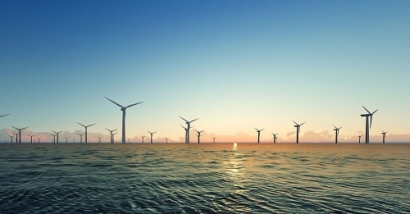
The development and adoption of international standards that govern the entire technology life cycle can provide such encouragement, according to the findings of a new report launched by IRENA. Nurturing Offshore Wind Markets: Good practices for International Standardisation provides a detailed analysis of standardisation frameworks developed by front runner countries and identifies areas where more work is needed. Countries with plans to deploy offshore technology can find guidance on best practices in setting technical standards and certification schemes.
“As costs fall and technology improves, countries beyond the existing European market will pursue their offshore wind potential in support of strategic energy policy priorities,” said Dolf Gielen, Director of IRENA’s Innovation and Technology Centre. “Now is the time for the development of a harmonised and documented global standardisation framework that enables these countries to access the cost-effective potential of offshore wind.”
The numerous benefits associated with international standards include increased consumer and investor confidence, improved safety, greater reliability and reduced transaction costs for offshore technology, creating a pathway to accelerated growth. In what remains a nascent industry, harmonising technical requirements and certifications systems across markets will facilitate trade and accelerate the sector’s maturation process.
“The establishment of such international standards brings the work of a number of experienced offshore leaders together, merging their efforts to forge an instrument for cost reduction and investment stimulation,” said Francisco Boshell, Analyst at IRENA and one of the authors of the report.
While offshore wind has a bright future, the industry is looking back to learn lessons in safety, reliability and risk mitigation from the more traditional offshore oil and gas industry. However, the report outlines specific challenges to address that have no historical reference such as structure designs for dynamic machines and standards for floating turbines, both of which require new thinking and tailored solutions.
With today’s international standards primarily a reflection of European weather and sea conditions, an evolution in standards is necessary to ensure they remain relevant and applicable in the deep water, ice and hurricane conditions likely to be found offshore wind’s new regions such as USA, India, China, Japan and Korea.
“Offshore wind has the potential to be inclusive, cost-effective and game-changing,” according to Gielen. “The time is now for governments to put in place detailed offshore standardisation and quality control strategies to drive the development of domestic offshore wind energy as its costs continue to fall.”

